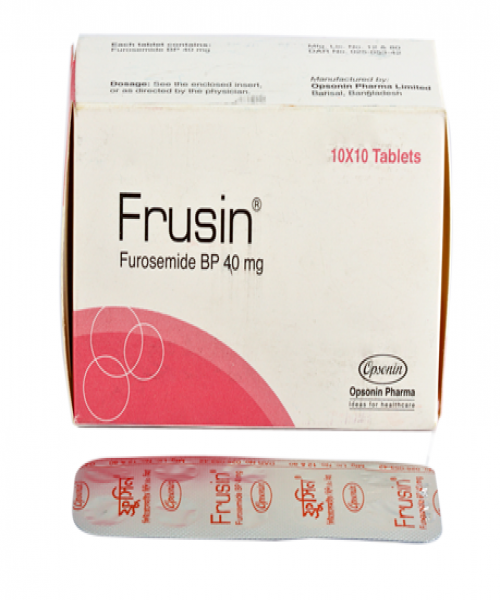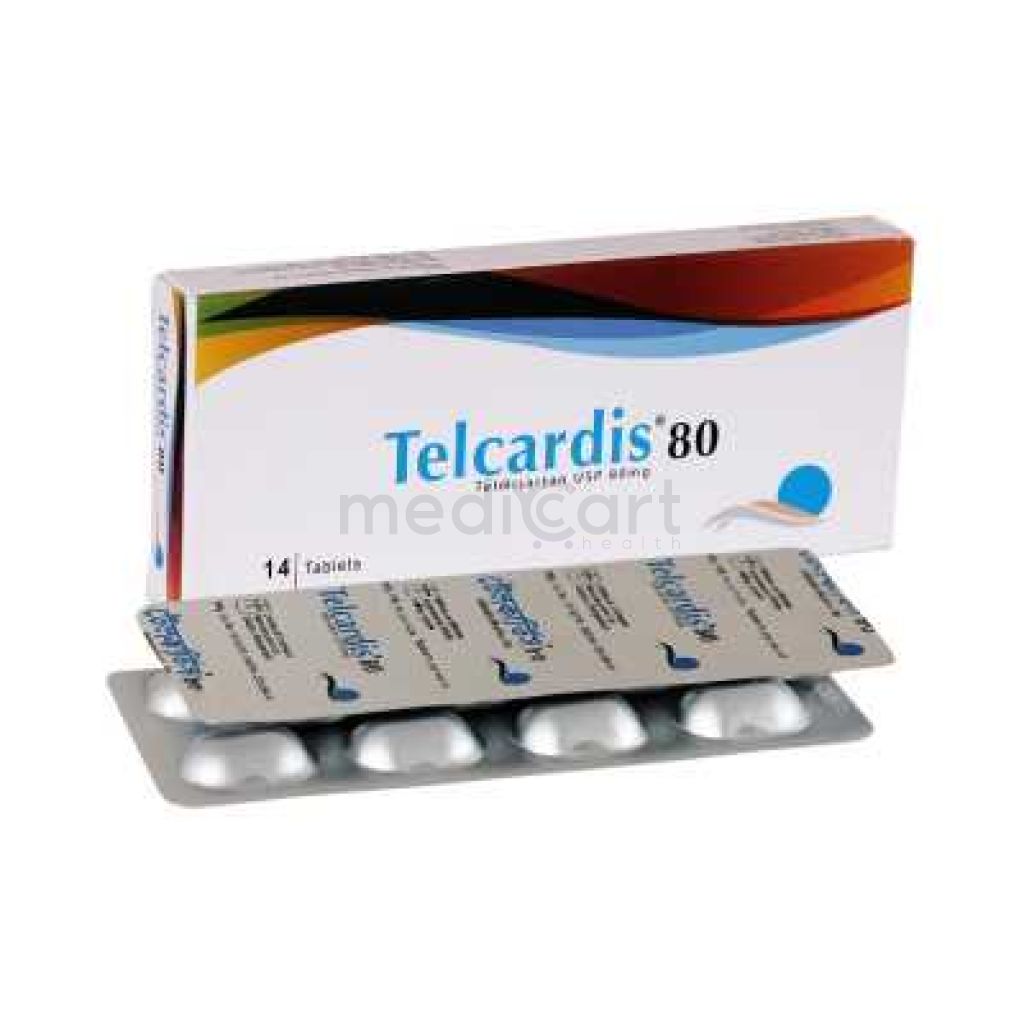

Frusin 40 mg Tab
Tablet* Delivery will be done in Dhaka city only.
More Information About - Frusin 40 mg Tab
Description
Indications:
Hypertension, Congestive heart failure, Nephrotic syndrome, Hypercalcemia, Edema, Cirrhosis, Renal impairment, Cerebral/pulmonary edema, Pulmonary oedema, Acute renal failure, Chronic renal failure
Pharmacology:
A monosulphonyl diuretic is furosemide. It's a potent diuretic that keeps working even when the glomerular filtration rate is low (GFR). Furosemide affects renal tubular function in a unique way. It has a far stronger effect on peak diuresis than other agents. Other characteristics include (I) rapid start of action, (II) inhibition of sodium and chloride transport in the ascending limb of the Henle loop, and (III) action independently from acid-base balance alterations. Furosemide works by preventing electrolyte reabsorption in the loop of Henle's thick ascending limb. Furosemide is easily absorbed from the gastrointestinal system and is bound to plasma proteins in large amounts. It is eliminated quickly in the urine. Its impact is visible in around 5 minutes after an hour of intravenous infusion and lasts for about 2 hours.
Dosage (breakdown or, not) :
Adult:
Adults: The initial adult dose is 40 mg daily, reduced to 20 mg daily or 40mg on alternate days. In some patients daily doses of 80mg or higher (given in divided doses) may be required. The individually determined single dose should then be given once or twice daily (eg, at 8 am and 2 pm). For resistant edema, 80-120 mg daily. In patients with clinically severe edematous states the dose of furosemide may be carefully titrated up to 600 mg/day. When doses exceeding 80 mg/day are given for prolonged periods, careful clinical observation and laboratory monitoring are particularly advisable.
Child:
Children: Neonate: 0.5-2 mg/kg every 12-24 hours (every 24 hours if postmenstrual age under 31 weeks).
Child 1 month-12 years: 0.5-2 mg/kg 2-3 times daily (every 24 hours if postmenstrual age less than 31 weeks); higher doses may be required in resistant edema; max. 12 mg/kg daily, not to exceed 80 mg daily.
Child 12-18 years:20-40 mg daily, increased in resistant edema to 80-120 mg daily.
Elderly: In the elderly furosemide is generally eliminated more slowly. Dosage should be titrated until the required response is achieved.
Administration:
May be taken with or without food. May be taken w/ meals to reduce GI discomfort.
Interaction:
When ACE inhibitors are added to furosemide treatment, blood pressure drops dramatically. When lithium and furosemide are used together, serum lithium levels may rise. Concomitant use of strong diuretics like furosemide may enhance the harmful effects of nephrotoxic antibiotics.
Contraindication:
Anuria, electrolyte deficit, and pre-comatose states associated with liver cirrhosis are contraindicated with furosemide. Intolerance to furosemide or sulphonamides.
Side Effects:
Electrolytes and water balance may be altered as a result of prolonged diuresis, like with other diuretics. Alkalosis can be caused by long-term usage. It can also induce uric acid retention and severe gout in rare cases. Hyperglycemia and glycosuria are possible side effects of furosemide.
Pregnancy:
Category C pregnancy. In cardiogenic shock exacerbated by pulmonary oedema, as well as in the first trimester of pregnancy, furosemide should be administered with caution. During fast diuresis, keep an eye on your blood pressure and pulse. Electrolyte deficit individuals should be treated with caution. Furosemide may impede breastfeeding or enter into breast milk in nursing mothers. It should be taken with caution in that situation.
Precautions & Warnings:
Patients with prostatic enlargement or micturition dysfunction are more likely to suffer acute retention. When ACE inhibitors are added to furosemide treatment, blood pressure drops dramatically. Concomitant use of strong diuretics like furosemide may enhance the harmful effects of nephrotoxic antibiotics.
Storage Conditions:
Protect yourself from the sun. Do not use it after the expiration date. All medications should be kept out of the reach of youngsters. Only on a qualified physician's prescription can it be dispensed.
Disclaimer
The information provided herein are for informational purposes only and not intended to be a substitute for professional medical advice, diagnosis, or treatment. Please note that this information should not be treated as a replacement for physical medical consultation or advice. Great effort has been placed to provide accurate and comprehensive data. However, Medicart along with its authors and editors make no representations or warranties and specifically disclaim all liability for any medical information provided on the site. The absence of any information and/or warning to any drug shall not be considered and assumed as an implied assurance of the Company.






